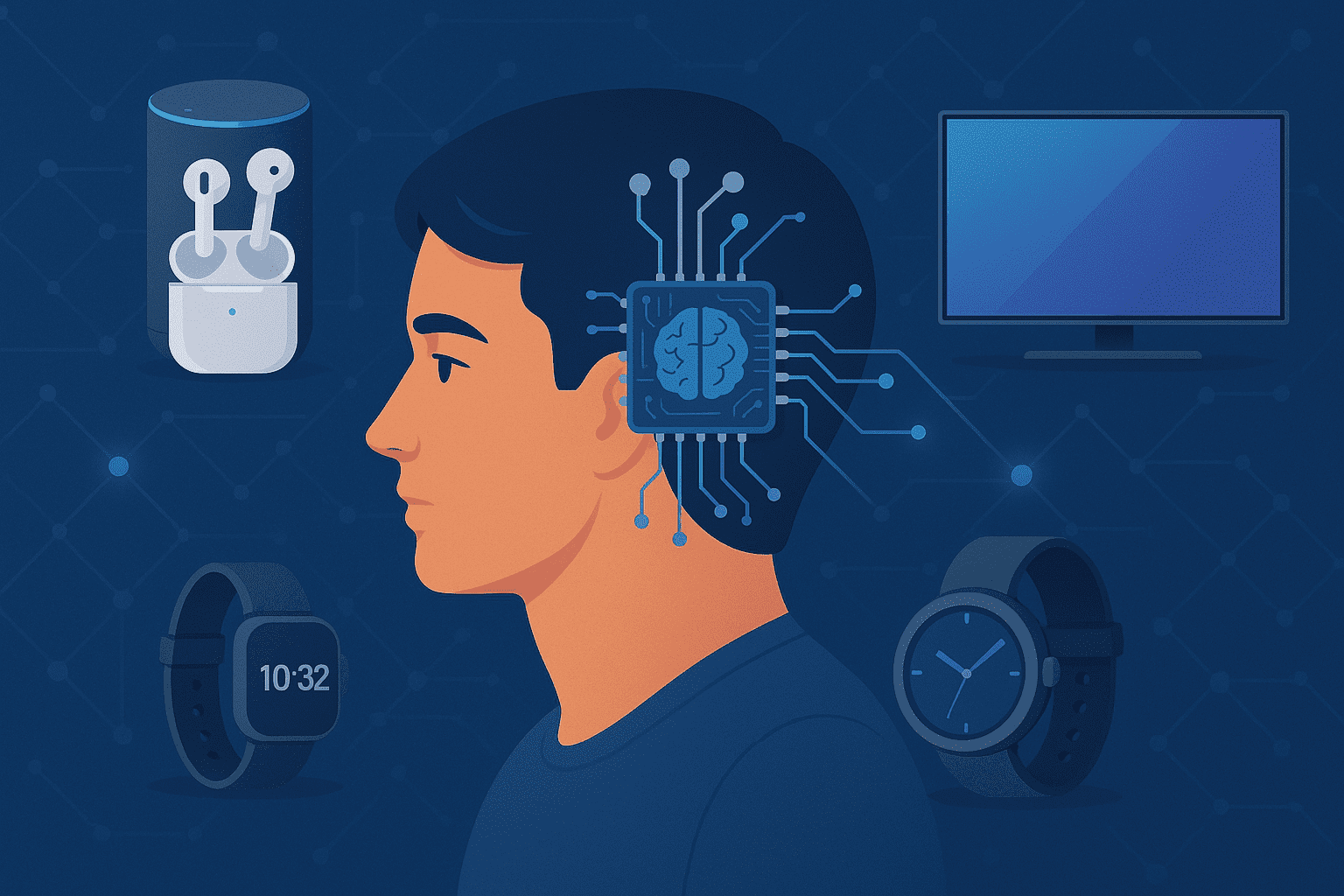Edge Artificial Intelligence (Edge AI) is revolutionizing the consumer electronics industry by enabling devices to process data locally, leading to faster responses, en hanced privacy, and reduced reliance on cloud computing. This article explores the current trends, applications, and future prospects of Edge AI in consumer electronics as of 2025.
1. Introduction
The integration of Artificial Intelligence (AI) into consumer electronics has been a significant trend over the past decade. In 2025, a notable shift is observed towards Edge AI, where data processing occurs directly on the device rather than relying solely on cloud-based solutions. This paradigm shift addresses concerns related to latency, privacy, and bandwidth, offering a more efficient and secure user experience.
2. What is Edge AI ?
Edge AI refers to the deployment of AI algorithms on hardware devices at the edge of the network, such as smartphones, smart speakers, and wearable devices. By processing data locally, these devices can make real-time decisions without the need to communicate with centralized servers.
3. Current Trends in Edge AI
Several trends are driving the adoption of Edge AI in consumer electronics:
• Enhanced Privacy: Local data processing ensures that sensitive information remains on the device, mitigating privacy concerns.
• Reduced Latency: Real-time data processing leads to quicker responses, crucial for applications like voice assistants and autonomous vehicles.
• Bandwidth Optimization: Minimizing data transmission reduces network conges tion and associated costs.
• Energy Efficiency: Advances in hardware design have led to more energy-efficient AI processing units suitable for edge devices.
4. Applications of Edge AI in Consumer Electronics
Edge AI is being integrated into various consumer electronics, including:
4.1 Smartphones
Modern smartphones utilize Edge AI for features like facial recognition, voice assistants, and camera enhancements. On-device AI processing enables these features to function seamlessly without relying on cloud services.
4.2 Wearable Devices
Wearables, such as smartwatches and fitness trackers, employ Edge AI to monitor health metrics in real-time, providing users with immediate feedback and personalized insights.
4.3 Smart Home Devices
Devices like smart thermostats, security cameras, and home assistants leverage Edge AI to learn user preferences and adapt accordingly, enhancing automation and user experience.
5. Challenges and Future Outlook
While Edge AI offers numerous benefits, challenges remain:
• Hardware Limitations: Edge devices have constraints in terms of processing power and memory, necessitating efficient AI models.
• Security Concerns: Ensuring the security of AI models and data on edge devices is paramount.
• Standardization: The lack of standardized frameworks for Edge AI development can hinder widespread adoption.
Despite these challenges, the future of Edge AI in consumer electronics is promising. Continued advancements in hardware and AI algorithms are expected to overcome current limitations, leading to more intelligent and autonomous devices.
6. Conclusion
Edge AI is set to redefine the landscape of consumer electronics by offering faster, more secure, and efficient data processing capabilities. As technology continues to evolve, the integration of Edge AI will become increasingly prevalent, enhancing the functionality and user experience of everyday devices.
– Dashrath, Department of Electrical Engineering
FOET, Madhav University

